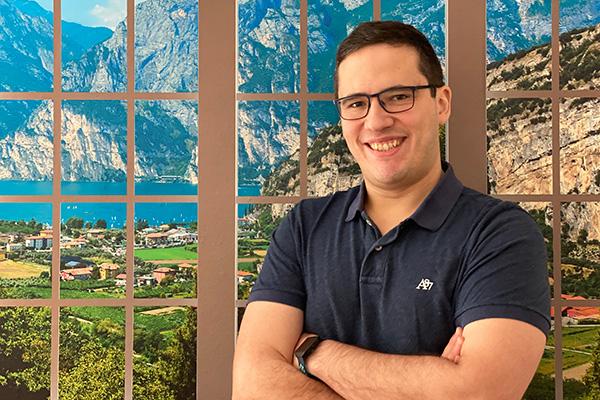
Rodriguez-Fernandez is the first member of the PSFC community to receive this honor from Forbes magazine.
December 2, 2020
PSFC postdoctoral associate Pablo Rodriguez-Fernandez (MIT PhD’19) has been named to the Forbes 30 Under 30 list in the Science sector for 2021.
As an MIT graduate student under the direction of Department of Nuclear Science and Engineering (NSE) Professor Anne White, Rodriguez-Fernandez became intrigued by a fusion research mystery that had remained unsolved for 20 years: Why, under certain tokamak conditions, does cooling the edge of a fusion plasma result in the core becoming hotter?
His novel observations and subsequent modeling helped provide the answer, earning him the 2019 Del Favero Doctoral Thesis Prize, awarded annually to a PhD graduate in NSE whose thesis is judged to have made the most innovative advance in the field of nuclear science and engineering.
Currently, Rodriguez-Fernandez spends half of his time working on SPARC, MIT’s fusion experiment, under the supervision of PSFC deputy director Martin Greenwald. He is involved in predicting the behavior and performance of SPARC plasmas using advanced computer simulation and optimization algorithms.
His research led him to become first author of an article published in a SPARC special issue of the Journal of Plasma Physics, September 2020: “Predictions of core plasma performance for the SPARC tokamak.”
Apart from this work on plasma performance, he is gaining experience on the topic of “whole-device modeling,” involving simulations that connect the engineering of the machine with the physics of the plasma, an effort that will aid in designing SPARC and supporting future experiments.
Through a collaboration with Oak Ridge National Laboratory, Rodriguez-Fernandez also devotes time to the JET tokamak in the UK, studying why plasmas that contain Deuterium (D) and Tritium (T) appear to have better energy confinement than plasmas that contain only Hydrogen. Understanding this is important to tokamaks like SPARC and ITER, the next-generation fusion device being built in France, as they will operate with mixtures of DT.
He contributes as well to the ASDEX Upgrade tokamak at the Max Planck Institute for Plasma Physics Institute of Plasma Physics in Germany, working with Prof. Anne White and her group. This collaboration, funded by the U.S. Department of Energy, focuses on the Correlation Electron Cyclotron Emission (CECE) diagnostic, which is able to measure tiny fluctuations in the plasma temperature that are related to the loss of energy and particles from the hot core of the plasma to the edge. Rodriguez-Fernandez trains the group in the use of modeling techniques to better understand the experimental results and study energy transport. He is also implementing machine learning algorithms to design experiments for the device, which are expected to be benchmarked in the coming year.
Rodriguez-Fernandez is the first member of the PSFC community to receive this honor from Forbes magazine.
Topics: Magnetic fusion energy, Plasma science, SPARC, Plasma turbulence, Anne White, Martin Greenwald